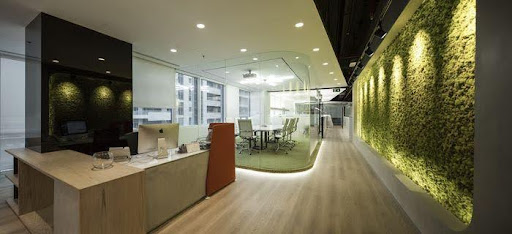Thermochromic and Photochromic Coatings: Fun Science or Future Utility?

In the world of materials science, innovation is driving the development of coatings that can do more than just protect surfaces. Thermochromic and photochromic coatings are two such innovations that are stirring excitement in industries ranging from automotive to fashion and even healthcare. But are these coatings just fun science experiments, or are they truly useful for the future?
What Are Thermochromic and Photochromic Coatings?
Before we dive into the practical applications, let’s first understand what thermochromic and photochromic coatings are.
- Thermochromic coatings change color in response to temperature fluctuations. This is made possible through the use of temperature-sensitive dyes or pigments embedded within the coating. When exposed to heat or cold, these coatings shift color, offering visual cues about the temperature of a surface.
- Photochromic coatings, on the other hand, change color in response to light exposure. This phenomenon is most commonly observed in materials like sunglasses that darken when exposed to sunlight and return to their original shade when the light dims.
Both of these coatings exhibit fascinating properties and have already begun to find their way into a variety of applications. But the question remains: are they more than just novelty items, or do they have real-world uses that can revolutionize industries?
Thermochromic Coatings in Real Life
Thermochromic coatings have gained significant attention due to their ability to change color in response to temperature. One of the most popular examples of this is the temperature-sensitive mugs or drinkware that change color when a hot beverage is poured in.
But thermochromic coatings have much more to offer beyond novelty items. In industries like automotive, thermochromic coatings can help with monitoring the temperature of critical engine parts. These coatings could be applied to components such as exhaust systems or engines, allowing mechanics to instantly see if a part is overheating simply by looking at its color.
Moreover, thermochromic coatings are useful in the field of electronics. Devices like mobile phones and laptops can be coated with these materials to indicate temperature anomalies. If a device begins to overheat, the coating would change color, signaling the need for cooling or a break.
A particularly promising area is the integration of self-healing ceramic coating technology with thermochromic properties. The combination of these two innovations could result in surfaces that not only change color to indicate temperature changes but can also self-repair if damaged. This would have huge implications for high-traffic areas, automotive industries, and more.
The Future of Photochromic Coatings
While thermochromic coatings are already making waves in industries, photochromic coatings have a slightly different, but equally exciting, future. The most well-known application of photochromic coatings is in eyeglasses that adjust their tint based on the amount of sunlight they’re exposed to. This technology has been around for decades, but new advancements are making photochromic lenses smarter and more efficient.
In the automotive industry, photochromic coatings are being explored for use on windows and sunroofs. Imagine a car’s sunroof that automatically tints when the sun is at its brightest, creating a comfortable driving environment without the need for manual adjustments. This would not only improve comfort but also reduce the energy required for air conditioning systems in vehicles, offering a sustainable solution.
Architectural applications are also being researched, where photochromic coatings could be applied to windows and facades of buildings. In this context, photochromic coatings would regulate the amount of sunlight entering a building, reducing the need for artificial lighting during the day and improving energy efficiency.
Potential for Integration: Self-Healing Ceramic Coatings and Graphene
Thermochromic and photochromic coatings hold immense potential, but what if they could be further enhanced with the use of advanced materials? This is where Graphene Coating comes into play.
Graphene is a material known for its incredible strength, conductivity, and flexibility. When integrated with coatings, graphene could potentially provide additional properties, such as enhanced durability and resistance to wear and tear. This could make thermochromic and photochromic coatings more reliable and longer-lasting, especially in harsh environments like automotive and construction.
In addition to graphene, self-healing ceramic coatings could be a game-changer. These coatings use advanced technology that allows them to “repair” themselves when damaged, often by reforming their surface at the molecular level. The combination of self-healing properties with thermochromic or photochromic coatings could lead to products that not only change color with temperature or light but also recover from minor damages without requiring maintenance.
For example, an automotive part that is coated with a self-healing thermochromic coating would not only change color in response to heat but could also self-repair if scratched or damaged. This would extend the lifespan of products, reducing the need for frequent replacements or repairs and offering significant cost savings in the long term.
Applications Across Multiple Industries
These coatings are not just theoretical concepts—they’re already being applied in various industries. Here are some of the most promising applications:
- Automotive Industry: From self-healing parts to color-changing car paint, thermochromic and photochromic coatings can revolutionize the automotive industry. Not only will they add aesthetic appeal, but they could also offer functional benefits like enhanced safety features and reduced maintenance costs.
- Fashion and Textiles: Imagine a jacket or a pair of shoes that change color depending on the weather or temperature. Thermochromic fabrics could be used in the fashion industry, giving consumers a dynamic, customizable look while providing functional temperature feedback.
- Healthcare: In the medical field, thermochromic coatings could be used in temperature-sensitive drug packaging, where the packaging changes color to indicate if a medication has been exposed to unsafe temperatures. This could ensure that medications remain effective and safe for use.
- Consumer Electronics: Laptops, smartphones, and wearable devices could benefit from photochromic or thermochromic coatings to enhance functionality and aesthetics. These coatings could change color when exposed to heat or light, making devices more intuitive and user-friendly.
Conclusion
Thermochromic and photochromic coatings are much more than just fun science. They are leading us into a future where coatings are not just passive layers of protection but active materials that can inform us, adapt to changes in our environment, and even self-repair. With the integration of advanced materials like self-healing ceramic coating and Graphene Coating, these coatings could reach new heights of durability, sustainability, and functionality.
As we continue to explore the possibilities of these materials, one thing is clear: we’re only scratching the surface of what’s possible. The future of coatings is bright, colorful, and incredibly versatile, offering significant advantages across various industries and potentially changing the way we interact with the world around us.







